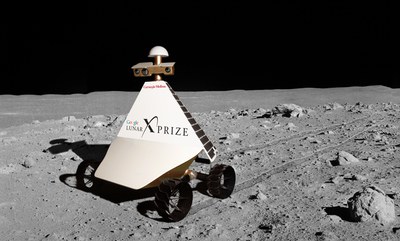Public-private partnerships for spaceby Lou Friedman
|
| I don’t think that American competitiveness or Chinese ascendancy will provide the next political boost for space ventures. There are too many other playing fields on which those games are played. |
And we did that, becoming the fastest growing public interest organization of the 1980s. Sagan had a lot to do with that, of course, but so too did the resonance of our advocacy for international cooperation for Mars exploration, a space station “worth the cost” (advancing exploration), private funding for the search for extraterrestrial intelligence when Congress cancelled it, private funding for the observations and discoveries of near-Earth objects, and seeding new means of planetary exploration, like a Mars balloon and Mars rover.
These are themes and positions that are still with us, and, in my view, still resonate with the public. But I fear that they are also perceived as not important, and that, as a result, they strike little political interest and decreasing public support. We can speculate whether external factors such as information overload and the Internet cause this, or whether it is a simple sign of maturity that even the incredible is rendered ordinary.
The biggest change, however, is the lack of a geopolitical context for space exploration. Racing the Soviets to the Moon was followed by a downturn in space interest and importance. Russian cooperation after the fall of the Soviet Union provided the next political boost, resulting in the International Space Station. Since then, the human program has floundered without a rationale, and the political importance of space exploration has again dropped.
I don’t think that American competitiveness or Chinese ascendancy will provide the next political boost for space ventures. There are too many other playing fields on which those games are played. Where space may play a major role is in boosting or even setting standards for public-private cooperation, an ever-increasing need in our economic and social programs. Political systems worldwide need to cope with a host of economic and social issues and changes. In every space-faring country, there is a strong private and commercial sector increasingly important and—in many cases—larger than the government. The US shift encouraging commercial rocket development follows increased roles for the private sector in communications, remote sensing, weather, and other Earth observing applications.
Despite my own skepticism about private roles in space exploration, I helped develop several in The Planetary Society and now see others emerging as ventures in what we call “NewSpace.” The Google Lunar X PRIZE has stimulated some ventures. I am skill skeptical about considering these to be wholly private ventures. Their exact business model eludes me. But for those seeing them as building government-commercial, or public-private, partnerships, I think they are on to something. Elon Musk has brilliantly shown this by his private entrepreneurial development of Falcon, coupled with his nurturing the government as a prime customer and active participant. Sierra Nevada and other new space companies also demonstrate this approach.
| But for those seeing efforts like the Google Lunar X PRIZE as building government-commercial, or public-private, partnerships, I think they are on to something. |
As the really huge issues of energy and health care loom in the forefront of the political landscape, the government will need to create public-private ventures to successfully develop sustainable solutions. Those fields are closer to consumers than is space, but space entrepreneurship and highly visible ventures have in the past served as models for other bigger society activities. One legacy of Apollo—“if we can go to the Moon, why can’t we…”—still remains with us today. Apollo and space system engineering served as a role model for other achievements. So could more innovative public-private partnerships in space.
During the “Roast and Toast” last week, Star Trek Voyager actor and Planetary Society Advisor Robert Picardo led an “all-star” cast in a spoof of my enthusiasm for novel space projects combined with baseball metaphors. Picardo, playing me, extolled the virtues of building a baseball park on the Moon, a field of dreams in a sea of dreams. The fictional me ignored skepticism and incredulity from others and described how we would get additional funding from Major League Baseball, who needed to expand their market to new worlds. It was riotously funny (thanks to my friends at the Society who wrote and produced the skit), but I am also glad that it recognized my recommendation that we have to move out of space circles and build partnerships throughout our society and economy to accomplish the things that we dream of in space. A commercial venture for baseball on the Moon may be premature, but other novel activities, tapping into both commercial prospects and government innovation await us.
In my concluding remarks at the dinner, I observed that perhaps the day of depending solely on charitable giving for space projects (as has been the Society’s past forte) had reached its limits. Newer ventures should also be built on partnerships with the government (NASA, ESA, JAXA, and others) and with commercial companies (in remote sensing, space weather observations, asteroid missions, entertainment and other media, etc.) They could be much larger than the purely eleemosynary projects and could open up a whole new future for citizen-supported space exploration.
